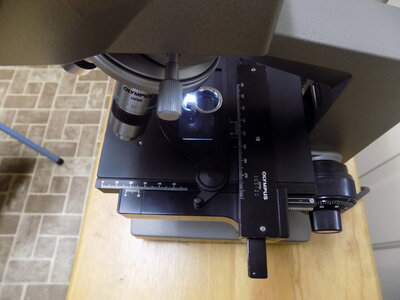- Joined
- Jul 21, 2004
- Messages
- 9,159
Yes, there are.Are there other reasons for an appraisal?
Most people with new items seeking appraisals are doing so for insurance reasons, or at least they think so. That's why they come in. That is to say, their insurance company required them to get it. Why?
The appraisal is going to be used as the purchase order for the replacement in the case of a loss. That’s why they ask for it upfront. The plan is to take the description section out of the report, minus the price, and ask suppliers to bid to replace it with ‘like kind and quality' or words to that effect. They will then adjudicate the claim based on whoever comes in the cheapest. The weaker the appraisal, the more wiggle room they have, and the wiggle is never in your favor. That makes the first step simple enough. Read the report, look at the data provided, the photos, the narrative, the certs and so on, and decide if you are reasonably likely to be happy with the results if a replacement were to be made based solely on this information. Better data makes for better replacements. If not, you need a new appraisal.
#2. An independent appraisal constitutes something of a quality control step. I do this quite a bit... Many times a day for the last several decades. When a problem comes up, I would estimate 80% of the time, it has to do with the craftsmanship, condition, or other details that do not appear on the lab docs or in the seller's "appraisal". They also don’t appear on the receipt. If the stones are crooked, if things are chipped, or any other potential problems are present, a seller document isn’t going to mention it. Perhaps equally importantly, if the first time you have an expert actually look at the piece is 3 years down the road when your carrier asks you to update the report, there’s nothing you can do if there’s a problem. If you have it inspected immediately, any reputable vendor will work with you in resolving the problem(s). You may be able to do much of this yourself, like checking every stone to be sure it’s secure, but do you do it? Do you even know what to look for? Again, I have yet to see a seller-supplied report that indicates a craftsmanship problem like loose or crooked stones or defective prongs when, in practice, it’s common.
#3 Some details, like matching the stone to the reports provided or confirming metal content are not entirely obvious. Marked 18k doesn’t make it true, for example. Identifying synthetic melee is not a trivial task and involves tools that most people don’t have.
#4 Nearly every customer has questions. Some have quite a few. They often boil down to things that left them scratching their heads after the sales presentation, competitors, or the Internet. Is this super-ideal? What even is that? How do I know if my stone was graded in India? Should I care? What’s an Idealscope? What’s a Brilliancescope? What’s a ‘cloud not shown’? Is this the right size for my finger? They called it handmade. Is it? Why is it snagging so much? Why was it so cheap (or expensive)? Is it Canadian? Is it treated? What does 'clarity enhanced' mean? It’s different for every customer.
#5 The seller-supplied report serves the same purpose as the sales receipt, and yes, you want one. These should say the same things, by the way. Some people want a second opinion on an expensive purchase, and it’s not a second opinion if it comes from the same source as the first.
Last edited:




300x240.png)